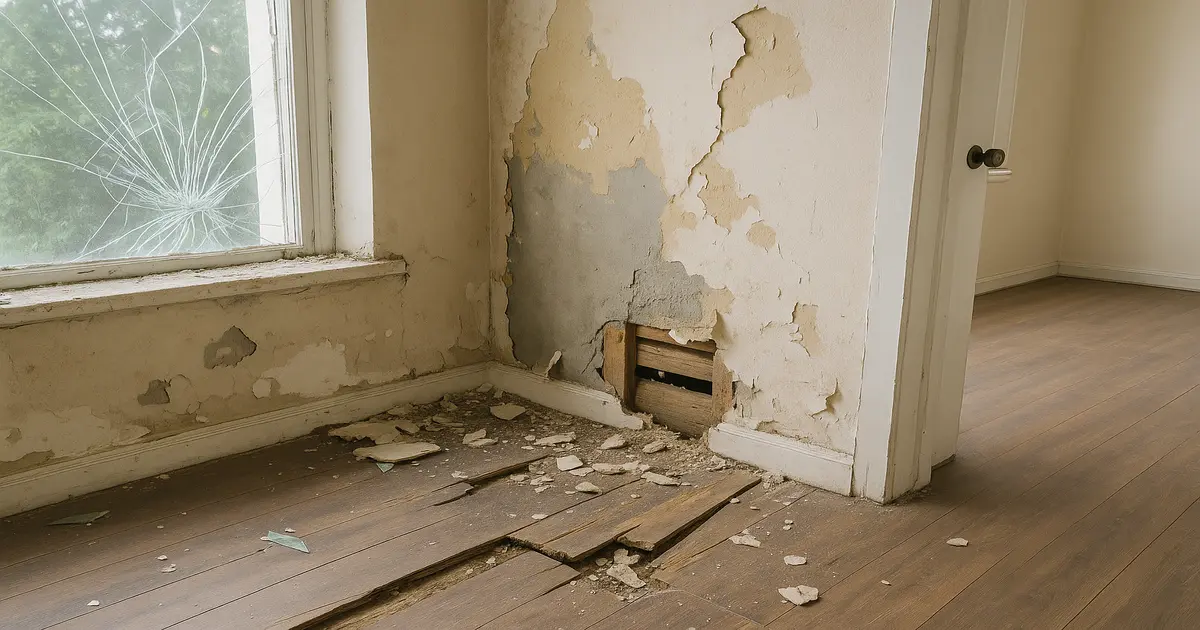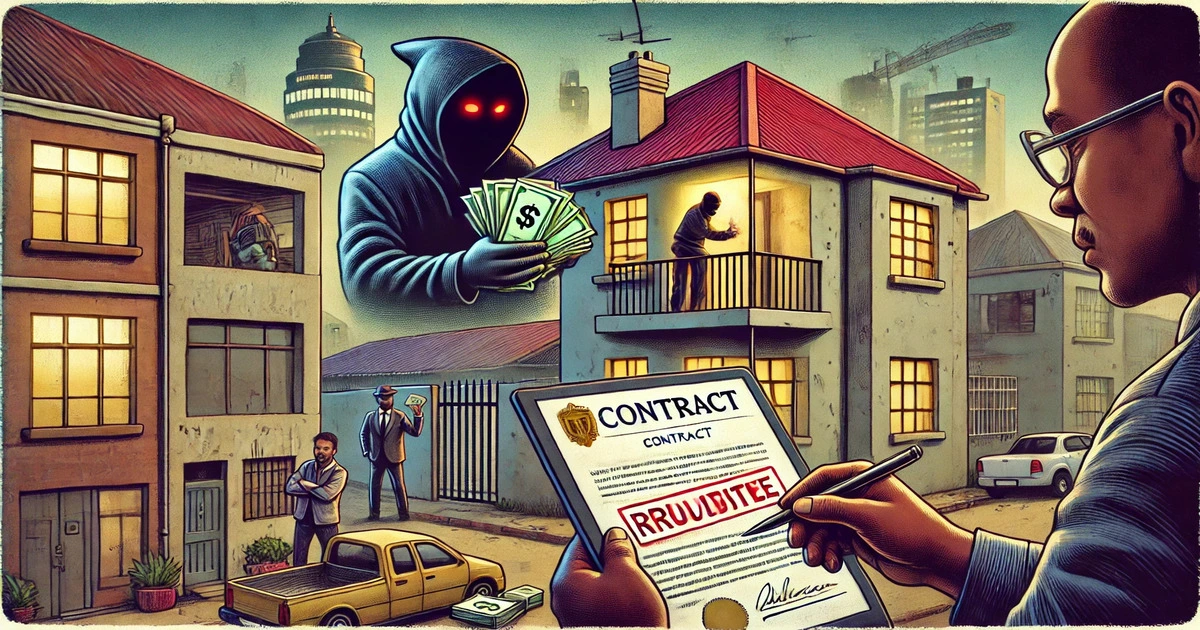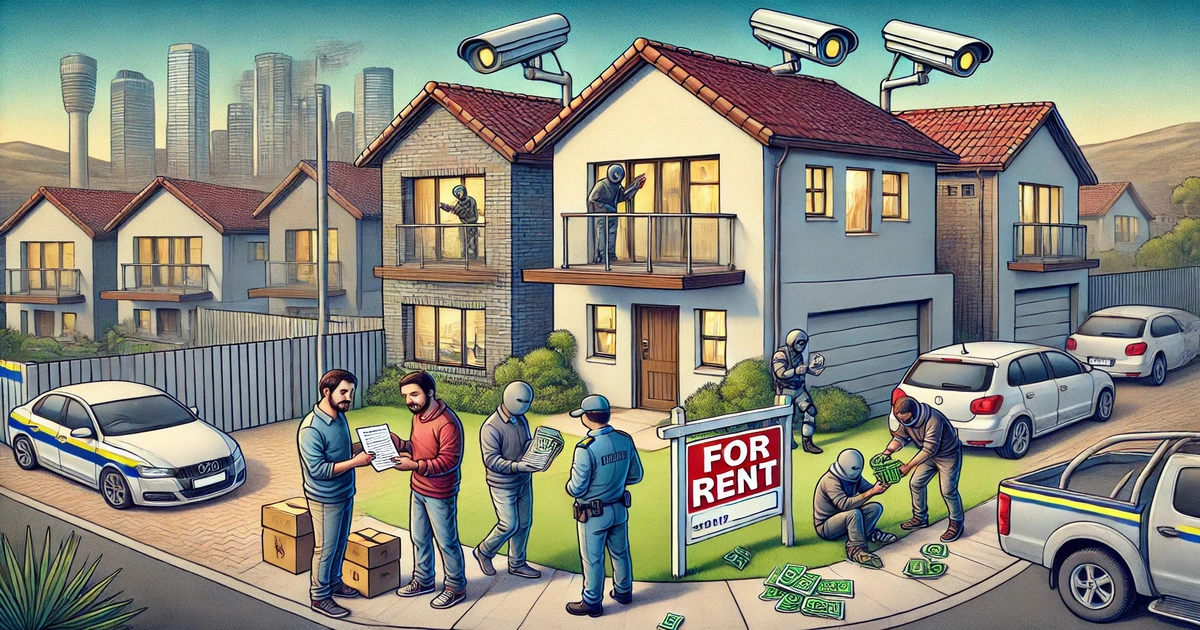My Tenant Damaged My Property. What Can I Do in South Africa?
Dealing with property damage caused by a tenant can be one of the most frustrating experiences for a landlord in South Africa. If you’re saying to yourself, “My tenant damaged my property – what can I do?”, you’re not alone.
Fortunately, the law does offer avenues for recourse, provided you act within the framework of South African landlord-tenant legislation.
This guide outlines the steps you can take, from assessing the damage and documenting evidence to legal recovery of costs and eviction (if necessary).
Inspecting and Documenting the Damage
The moment you suspect that your tenant has caused damage to your property, the first thing to do is conduct a thorough inspection. You have the right to access your property for inspection purposes, provided you give reasonable notice—usually 24 to 48 hours.
Use the following approach:
- Take dated, high-resolution photographs of the damage.
- Obtain a professional assessment or quotation for the repair cost.
- Refer to the incoming inspection report signed by both parties at the start of the lease.
This documentation will be vital if you need to recover costs from the deposit or pursue a legal claim.
Determine the Type of Damage
It’s important to distinguish between wear and tear and malicious or negligent damage.
- Fair wear and tear refers to the normal deterioration that occurs from regular use (e.g., faded paint).
- Malicious or negligent damage includes broken windows, holes in walls, or damaged fixtures.
South African law allows landlords to deduct the cost of repairs for malicious damage from the tenant’s deposit at the end of the lease, but not for wear and tear.
Review the Lease Agreement
When facing the issue of “my tenant damaged my property – what can I do?”, the next step is to review the lease. Most standard lease agreements contain clauses that specify the tenant’s responsibility for maintaining the premises and avoiding damage.
If your lease is silent on this or vague, you may need to rely on general common law principles and the Rental Housing Act for guidance.
Can I Use the Tenant’s Deposit?
Yes, provided the damage is beyond wear and tear, and:
- The damage is adequately documented.
- The outgoing inspection confirms the damage (with the tenant present, where possible).
- The costs are reasonable and match contractor quotations.
You must provide the tenant with:
- A breakdown of deductions,
- Proof of repair costs (receipts or quotes),
- Any remaining deposit (if applicable) must be returned within 14 days after the lease ends.
If no damage is found, the deposit must be refunded within 7 days.
Can I Claim Additional Damages If the Deposit Isn’t Enough?
Yes. If the cost of repairs exceeds the deposit, you can pursue the tenant for the outstanding balance.
This usually involves:
- Sending a written demand with a breakdown of the costs.
- Allowing a reasonable period for payment (usually 7–14 days).
- If unpaid, lodging a claim in the Small Claims Court (up to R20,000) or pursuing action via the Magistrate’s Court for higher amounts.
Can I Evict a Tenant for Damaging My Property?
In severe cases, where damage is ongoing, deliberate, or part of a wider pattern of misconduct, you may be justified in terminating the lease and pursuing an eviction.
However, eviction is a legal process governed by the Prevention of Illegal Eviction from and Unlawful Occupation of Land Act (PIE Act). You cannot simply lock out or remove the tenant.
You must:
- Give notice of breach (typically 20 business days to remedy).
- If the issue remains unresolved, cancel the lease in writing.
- Apply to the court for an eviction order.
Only once the court grants the eviction and the sheriff executes the order can the tenant be lawfully removed from the premises.
Alternative Dispute Resolution (ADR)
If the tenant disputes the claim for damages or if there’s a disagreement over repair costs, consider Alternative Dispute Resolution. The Rental Housing Tribunal offers free mediation and arbitration services in every province.
Filing a complaint is straightforward and can help avoid costly litigation. You’ll need:
- A copy of the lease agreement,
- Inspection reports,
- Photos and receipts for damages,
- A written summary of your claim.
What If I Didn’t Conduct an Incoming Inspection?
This complicates matters. Without a signed incoming inspection, it may be hard to prove that the tenant caused the damage rather than inheriting it. The Rental Housing Act states that in such cases, the landlord may not withhold any portion of the deposit.
You can still pursue a civil claim, but your burden of proof is significantly higher.
Can I Withhold Utilities or Access as a Form of Leverage?
No. Even if the tenant has damaged your property, you may not:
- Disconnect water or electricity,
- Change locks,
- Block access to the premises.
These actions are considered illegal evictions and can result in court penalties against you.
Best Practices to Prevent Future Damage
If you’re dealing with the aftermath and wondering how to avoid saying “my tenant damaged my property” again, consider these steps:
- Always conduct a joint inspection of both incoming and outgoing shipments to ensure quality control.
- Use a detailed written lease with clear damage clauses.
- Include a clause requiring tenant liability insurance.
- Perform routine mid-lease inspections (with notice).
- Screen tenants carefully through references and credit checks.
Final Thoughts
If you’re faced with the problem “my tenant damaged my property – what can I do?” in South Africa, the law is on your side, provided you follow due process.
From deposit deductions and claims for extra costs, to mediation or eviction in severe cases, landlords have remedies under both the Rental Housing Act and common law.
Documentation is critical, as is compliance with legal notice procedures. Taking shortcuts, such as illegal evictions or withholding services, can backfire, even if the tenant has misbehaved.
Useful External Links
- www.gov.za/documents/rental-housing-act
- www.justice.gov.za/legislation/acts/1998-19.pdf
- www.westerncape.gov.za/service/rental-housing-tribunal
- www.smallclaimscourt.co.za
- www.lawforalloccasion.co.za/eviction-process
FAQs
Can I take my tenant to Small Claims Court for property damage?
Yes, if the claim is under R20,000 and you can prove the tenant caused the damage.
What if the damage was accidental?
If the tenant was negligent (for example, leaving taps running), you can still hold them liable under the terms of the lease.
Can I deduct the cost of repainting?
Only if the damage goes beyond fair wear and tear (e.g., holes in the wall, graffiti).
What happens if I didn’t do an incoming inspection?
Without it, the tenant may be entitled to a full deposit refund, unless you can provide clear proof to the contrary.
How long do I have to return the deposit after the repairs are completed?
You must return the balance (if any) within 14 days after lease termination.
Membership with the South African Landlords Association provides access to expert advice, legal resources, and a community of like-minded professionals.
Enhance your rental management experience and protect your investments by joining today!
Our Top Read Blogs:
Disclaimer:
This post is for general use only and is not intended to offer legal, tax, or investment advice; it may be out of date, incorrect, or maybe a guest post. You are required to seek legal advice from a solicitor before acting on anything written hereinabove.




